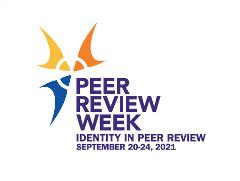
September 20-24, 2021, marks the 7th Annual Peer Review Week. The theme for this year’s global event, which celebrates the important role of peer review in maintaining research quality, is “Identity in Peer Review.” Some of our editors have weighed in on the question:
“Is peer review truly representative?”
 Dr. Kenneth Tew, Editor of The Journal of Pharmacology and Experimental Therapeutics:
Dr. Kenneth Tew, Editor of The Journal of Pharmacology and Experimental Therapeutics:
“Peer review, as with other forms of opinion-based assessment, is not foolproof and can sometimes be subjective. For Editors handling manuscript reviews, there is value in layering the process so that multiple opinions can be used to reach a final decision. In most journals, including JPET, this process is in place. It seems like reviews are garnered from a broad range of individuals. In the end, editors, associate editors, editorial board members, and invited referees are selected based on the quality of their previous reviews. To paraphrase Winston Churchill, peer review may be the worst form of assessment, except for all the others that have been tried.”
 Dr. Kathryn Meier, Editor of Molecular Pharmacology:
Dr. Kathryn Meier, Editor of Molecular Pharmacology:
“It is difficult to make peer review completely inclusive because the process relies on a certain level of expertise. As editors, we strive for inclusivity by inviting scientists with diverse backgrounds to participate, but we draw from a pool that is still not representative of the population of scientists. As an example of one approach to resolve this issue, ASPET is establishing a Reviewer Academy to train junior scientists in how to review; this outreach will hopefully lead to more inclusivity in the future. Well-trained reviewers are more likely to be called upon for their expertise in the future.”
 Dr. Michael Jarvis, Editor of PR&P and ASPET President-Elect:
Dr. Michael Jarvis, Editor of PR&P and ASPET President-Elect:
“This is an important question that is often difficult to definitively answer. Peer review, while imperfect, is the essential mechanism editorial boards use to ensure scientific quality of scholarly journals. Providing authors with timely and constructive feedback is highly dependent on the willingness and diligence of peer reviewers. Early career researchers represent a valuable, but often under-utilized, resource of scientific expertise due to their ‘hands-on’ daily laboratory experiences. In recent years, many journal editors have recognized this gap and have developed various initiatives to engage early career researchers as peer reviewers. These include annual meeting workshops, mentoring programs, and networking within existing editorial boards. Initiatives to enhance the involvement of early career researchers in scholarly publishing remains a key component of a journal’s academic vitality and represents an important career development activity for early career scientists.”
 Dr. Xinxin Ding, Editor of Drug Metabolism and Disposition:
Dr. Xinxin Ding, Editor of Drug Metabolism and Disposition:
“This is a complicated question. We can define this question further as ‘do the assigned editor/reviewers represent the majority view of the field?’ My answer would be ‘not all the time.’ Often the two or three assigned reviewers have conflicting overall recommendations about a paper. Some journals use four or more reviewers per manuscript, which may increase ‘representation;’ however, particularly for highly competitive journals, the editor may favor the most critical reviewer in making the final decision, even if that is a minority view among the assigned reviewers. There is also the observation that some manuscripts rejected by one journal eventually get published by another journal of equal prestige, which further reflects the randomness in the peer review process, even if that may be an infrequent occurrence.”
“As far as ASPET journals are concerned, we favor reviewers who are editorial board members. So, the diversity or inclusiveness of reviewers is at least partly dictated by the composition of the editorial board. We should be, and are, making continuous efforts to improve the diversity of the editorial board, e.g., by offering training opportunities to junior researchers and providing an expedited path for them to be added to the board.”